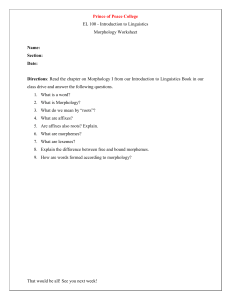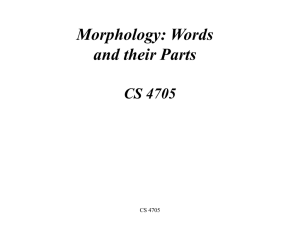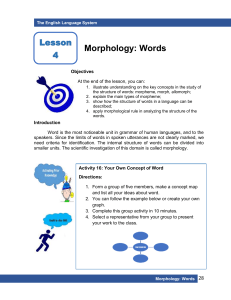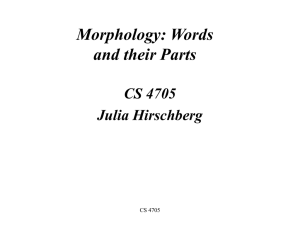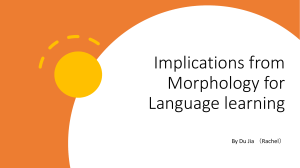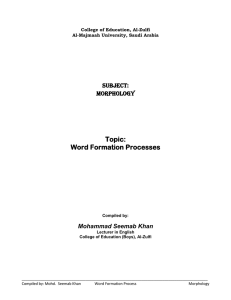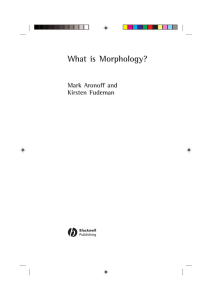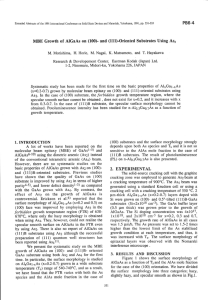ENG 321W Linguistics for teachers (DOC)
advertisement
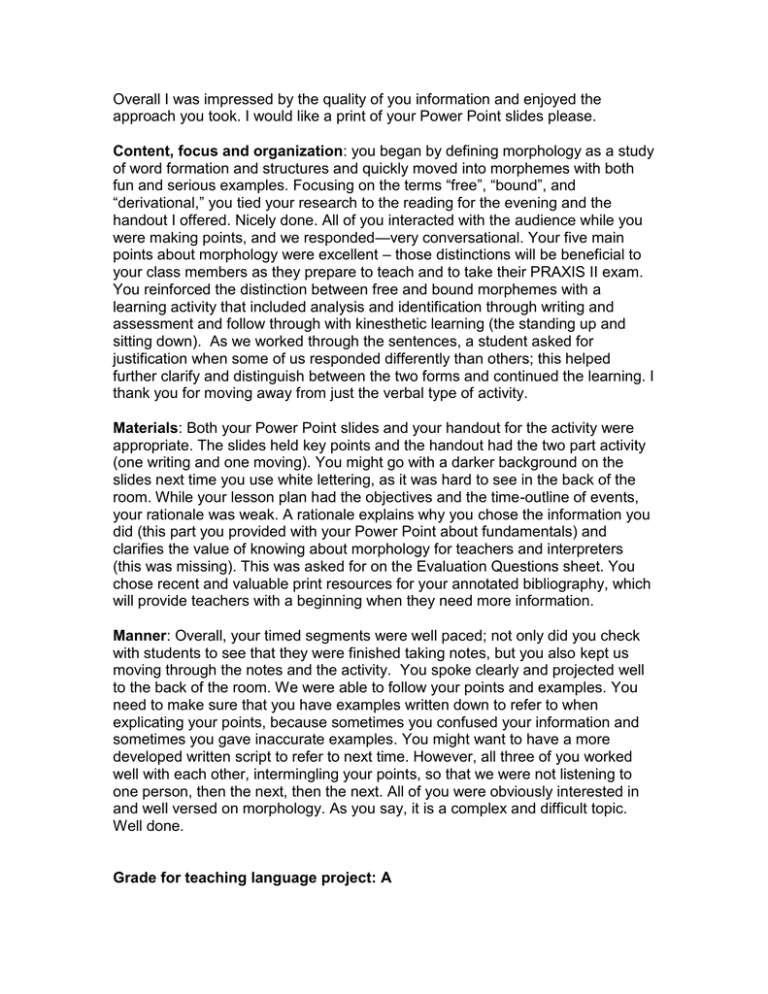
Overall I was impressed by the quality of you information and enjoyed the approach you took. I would like a print of your Power Point slides please. Content, focus and organization: you began by defining morphology as a study of word formation and structures and quickly moved into morphemes with both fun and serious examples. Focusing on the terms “free”, “bound”, and “derivational,” you tied your research to the reading for the evening and the handout I offered. Nicely done. All of you interacted with the audience while you were making points, and we responded—very conversational. Your five main points about morphology were excellent – those distinctions will be beneficial to your class members as they prepare to teach and to take their PRAXIS II exam. You reinforced the distinction between free and bound morphemes with a learning activity that included analysis and identification through writing and assessment and follow through with kinesthetic learning (the standing up and sitting down). As we worked through the sentences, a student asked for justification when some of us responded differently than others; this helped further clarify and distinguish between the two forms and continued the learning. I thank you for moving away from just the verbal type of activity. Materials: Both your Power Point slides and your handout for the activity were appropriate. The slides held key points and the handout had the two part activity (one writing and one moving). You might go with a darker background on the slides next time you use white lettering, as it was hard to see in the back of the room. While your lesson plan had the objectives and the time-outline of events, your rationale was weak. A rationale explains why you chose the information you did (this part you provided with your Power Point about fundamentals) and clarifies the value of knowing about morphology for teachers and interpreters (this was missing). This was asked for on the Evaluation Questions sheet. You chose recent and valuable print resources for your annotated bibliography, which will provide teachers with a beginning when they need more information. Manner: Overall, your timed segments were well paced; not only did you check with students to see that they were finished taking notes, but you also kept us moving through the notes and the activity. You spoke clearly and projected well to the back of the room. We were able to follow your points and examples. You need to make sure that you have examples written down to refer to when explicating your points, because sometimes you confused your information and sometimes you gave inaccurate examples. You might want to have a more developed written script to refer to next time. However, all three of you worked well with each other, intermingling your points, so that we were not listening to one person, then the next, then the next. All of you were obviously interested in and well versed on morphology. As you say, it is a complex and difficult topic. Well done. Grade for teaching language project: A
